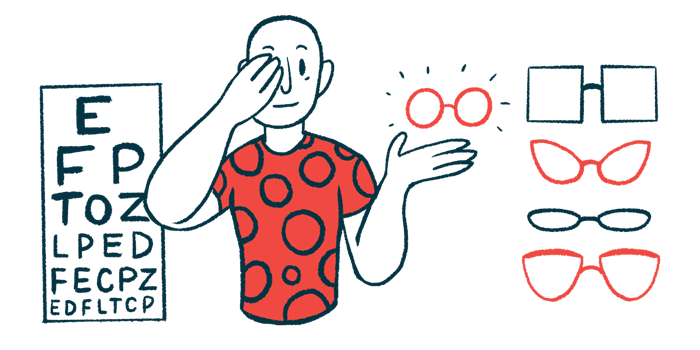Retinal Thinning May Help Diagnose Sjögren’s, Imaging Study Shows
Written by |

The thickness of the eye’s retina and the density of retinal blood vessels are significantly lower in women with Sjögren’s syndrome than healthy women, an imaging study demonstrated.
Retinal thinning, as measured by the noninvasive imaging technique called optical coherence tomography angiography (OCTA), may help diagnose Sjögren’s, according to the researchers.
The study, “Optical Coherence Tomography Angiography Biomarkers of Retinal Thickness and Microvascular Alterations in Sjogren’s Syndrome,” was published in Frontiers in Neurology.
In Sjögren’s syndrome, an altered immune response targets and attacks the glands that produce saliva and tears, leading primarily to dry eyes and mouth.
Because Sjögren’s mimics symptoms of other disorders, a diagnosis can be challenging and is usually based on a combination of tests, including blood and urine tests to detect the presence of disease-related antibodies, measuring tear production, imaging glands for signs of damage, and tissue biopsies.
Along with dry eyes, more than one-third of Sjögren’s patients have problems that can interfere with vision, such as eyelid swelling, inflammation on the eye surface, the walls, and the optic nerve, as well as ulcers on the cornea, the eye’s transparent, protective outer layer.
OCTA is a noninvasive imaging technique that uses light reflected off moving red blood cells to provide detailed information on tiny blood vessels within the eye.
To see if OCTA can be used to aid Sjögren’s diagnosis, scientists at the First Affiliated Hospital of Nanchang University, China, measured the thickness of the retina and the density of retinal blood vessels in Sjögren’s patients and compared the findings to healthy individuals.
“To date there have been no studies that have applied OCTA to the diagnosis of [Sjögren’s syndrome],” the research team wrote.
The study enrolled 12 women with Sjögren’s, with a mean age of about 55 and a mean time since diagnosis of about four years, as well as 12 age- and sex-matched healthy women who served as controls.
Patients had many hallmark signs of Sjögren’s, including significantly worse visual acuity, more eye damage, and a shorter tear film breakup time — the time for the first dry spot to appear on the cornea after a blink. They also had less tear production and lower tear volume.
The team used OCTA to measure the retinal thickness in the macula, the area of the retina responsible for high-resolution color vision in good light. They examined different retinal regions, including all four quadrants referred to as superior (upper), inferior (lower), nasal (left), and temporal (right), as well as in the inner and outer rings of the retina and its center.
The inner layer of the retina, which contains nerve cells, and the outer layer encompassing photoreceptor cells were also measured.
After adjusting for age, visual acuity, blood pressure, and intraocular pressure (fluid pressure inside the eye), the inner retinal layer was significantly thinner in Sjögren’s patients than controls in the upper quadrant of the inner ring. No differences between patients and controls were found in the thickness of the retina in other regions or layers.
In the outer retinal layer, Sjögren’s patients had a significantly thinner left quadrant in the outer ring, but not in the other three outer ring quadrants, nor the four quadrants of the inner retinal ring or the center.
Measuring the entire retinal thickness (inner and outer layers) revealed that the left quadrant of the outer ring was significantly thinner in patients than in controls.
Based on these data, the team found that measuring the thickness in the left side of the outer retinal ring provided a 82.8% accuracy for diagnosing Sjögren’s, and the nasal region of the full retina was 83.9% accurate, “suggesting moderate to high diagnostic sensitivity for [Sjögren’s syndrome],” the researchers wrote.
The team then measured the vascular density in these same retinal regions. After adjustments, the vascular density in patients was significantly lower in the left side of the retina, in both inner and outer rings, as was the right side of the inner ring.
Here, the diagnostic accuracy by measuring the vascular density in the inner nasal layer of the retina was 80.6%, and 75.2% for the outer nasal layer, “suggesting that [vascular density] has moderate diagnostic sensitivity for [Sjögren’s syndrome],” the scientists wrote.
Lastly, the full retinal thickness correlated with the vascular density, “suggesting that retinal thinning is related to decreased [vascular density] in [Sjögren’s syndrome],” the scientists said.
“Retinal thinning in the macular area — which affects vision — can also reflect the severity of dry eyes in [Sjögren’s syndrome] and has clinical value for assisted imaging diagnosis,” they concluded.






